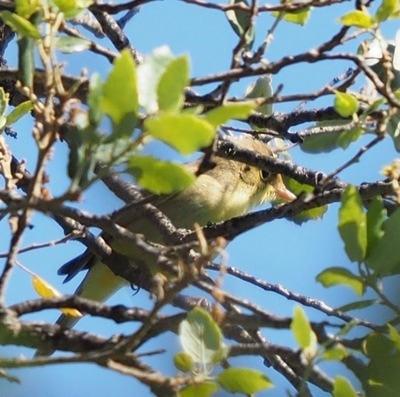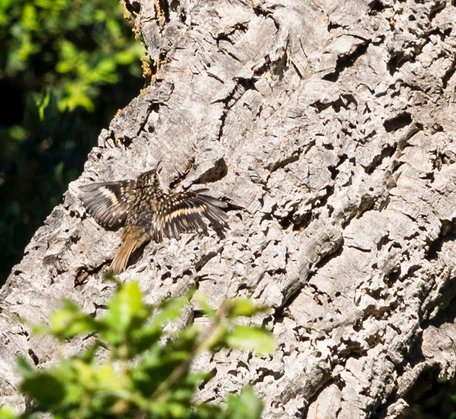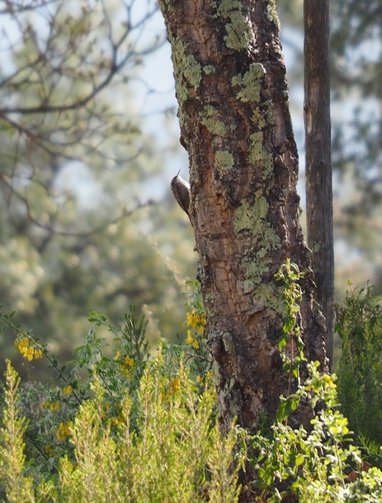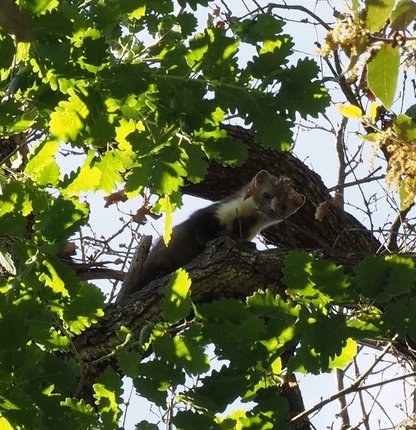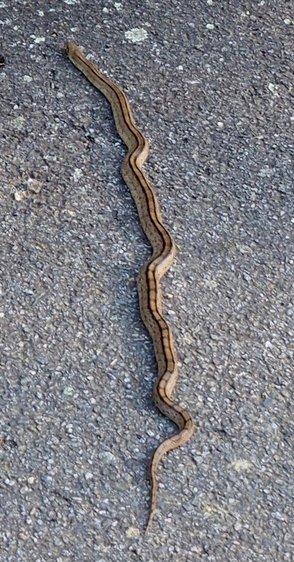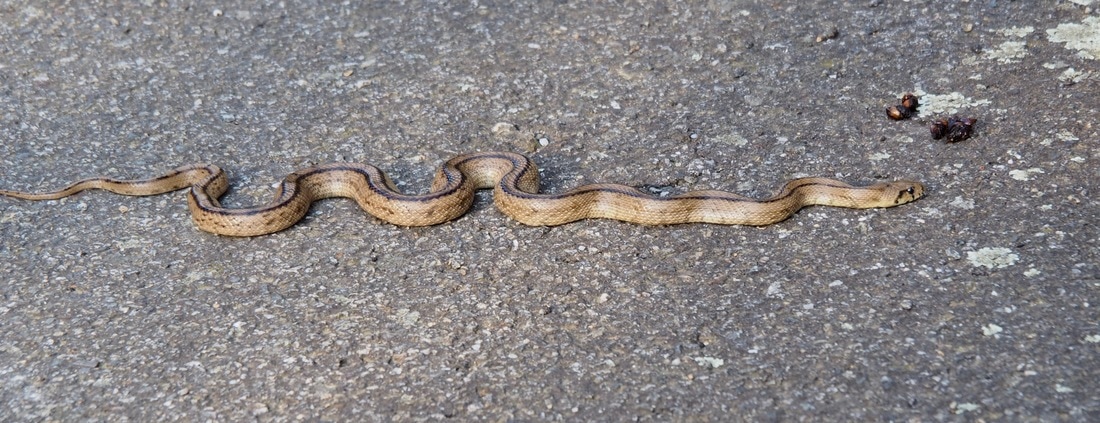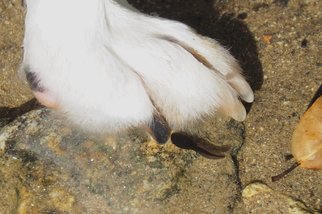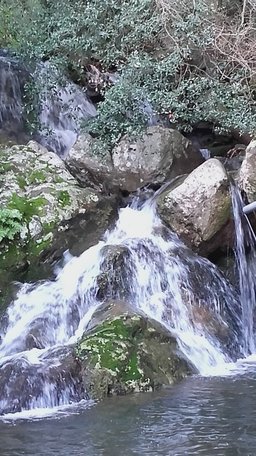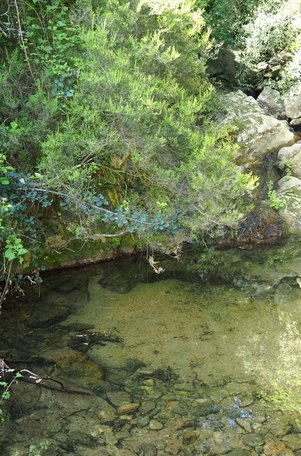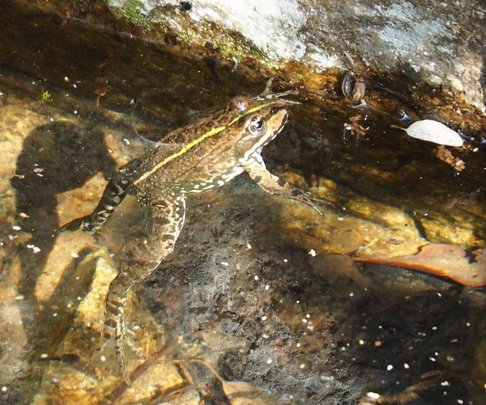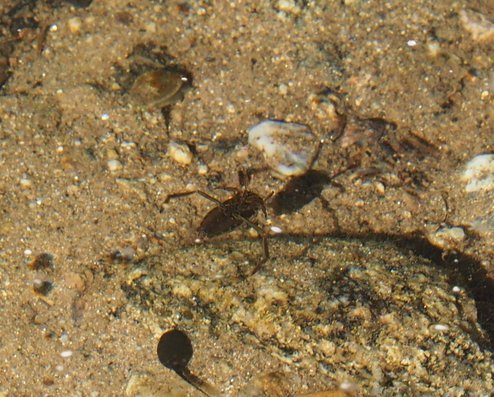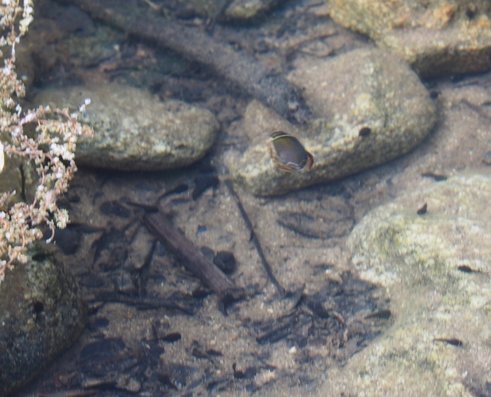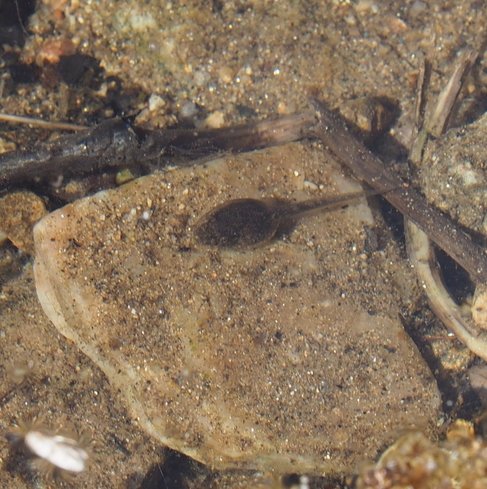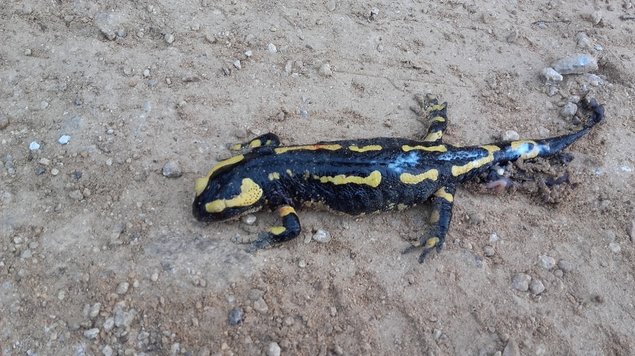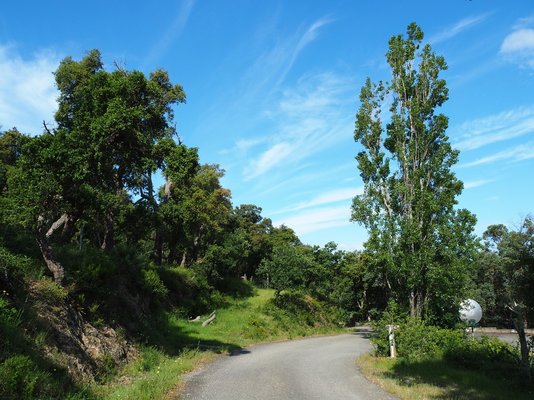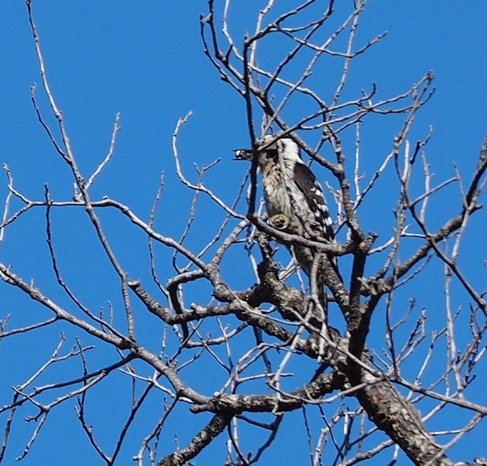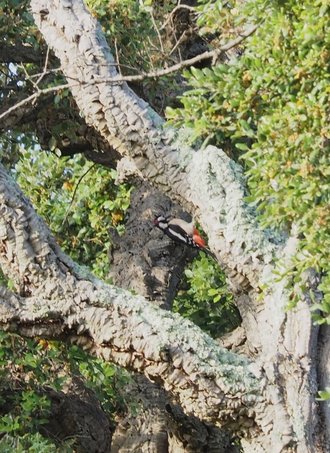This has been an extraordinary month for me in terms of wildlife observations. Most have taken place in the same small area of the Albères, which seems to be inhabited by a rich variety of creatures. This must be because habitats range from scrub, vineyards and a cherry orchard on the north side of the track, to cork oak woods with a stream and rock pool on the south side. I'm sure just as much has been happening around me in previous years - I've simply been looking harder this time. And I put that down to having a new camera, which, crucially, has a viewfinder.
The photos and video clips I've shot, whilst not high quality, have provided far more detail than I could pick up with the naked eye or would have remembered from fleeting glimpses through binoculars. Since that first sighting of the lesser spotted woodpeckers (blog, 13th May), I've taken the camera (in preference to binoculars) on each morning walk. If I hadn't, I might never have confirmed the identity of those little woodpeckers or the fire salamander larvae.
Then there were two different warblers I kept hearing but couldn't identify from their songs. On successive mornings the one bird chattered and warbled its heart out, hidden from view behind leaves, while the other skulked low in shady bushes. They were less than fifty feet from each other. From sound recordings, I pinned the songs down and, some days after that, finally caught sight of the birds. The yellow Melodious Warbler was superbly camouflaged and never budged from his position. I have seen him only once. The skulking Subalpine, on the other hand, turned very obliging, suddenly taking to singing in full view from a pine tree. Neither was very close for good shots - but close enough to help identification.
I don't often see mammals here, so this was a real treat - especially as beech martens are more often creatures of the night or dusk. Robin, who is familiar with their pine marten cousins in Scotland, told me that it probably has young at the moment; those extra, hungry mouths might necessitate more activity during daytime.
Certainly a lot seem to be about generally; I'm noticing their distinctive droppings everywhere - including outside our front gate. At the moment they appear to be gorging on cherries - wild ones as well as those in our gardens and orchards, I expect.
With only a few days of the month left, and birdsong already beginning to diminish, the chances of seeing anything different on my regular walk were low, I thought. But I was forgetting about reptiles. May is Snake Month of course. I sometimes hear a prolonged rustle in the verge as something slithers away. They usually move far too fast to spot. So it was a delight, a couple of days ago, to come across a ladder snake in the middle of the lane. Also something of a surprise at 7.45 in the morning, when the temperature was relatively cool. The snake was lying completely still, but didn't look injured. I wondered if, having sensed our approach, it was playing dead. The road was shaded just there too, so the snake, if chilly, might be sluggish?
Although there is little traffic on that lane, there was still a risk it would be run over by a vehicle or bike if it stayed there. Most snakes I see are dead ones. Another walker passed, had a look, gave it a helpful poke with her stick, and decided it was dead or ill. I wasn't nearly so sure and, once she left us, I noticed slight movement. After capturing the snake on film, I gently touched the tip of its tail with a twig. No response. With the twig, I lifted its tail a little. Nothing. Was I going to have to pick it up? Not knowing if ladder snakes are the kind that squirt noxious liquid from their anal glands, I decided against that. Gradually, I teased it into movement, and it slowly slid away off the road and down the bank.
Bruce subsequently told me ladder snakes, though not venomous, do bite if handled. I'm so glad I made the right decision.
Ladder Snake from Lesley McLaren on Vimeo.
